15 years one-stop China custom CNC machining parts factory
 1062 |
Published by VMT at Oct 01 2024
1062 |
Published by VMT at Oct 01 2024
Aerospace fasteners play a critical role in the structural integrity and safety of aircraft. These specialized components are designed to withstand extreme environmental conditions, high stresses, and prolonged exposure to corrosion, all while being lightweight. Aircraft fasteners are used in the assembly of critical systems, from fuselages and wings to avionics and control surfaces. Given their importance in the aerospace industry, a deep understanding of the types, characteristics, and materials used in these fasteners is essential for both engineers and manufacturers.
In this comprehensive guide, we’ll delve into the world of aerospace fasteners, exploring the different types, their unique characteristics, industry standards, and the materials they are made from. Additionally, we will compare aerospace fasteners to commercial-grade fasteners and discuss the qualities required for aircraft fasteners to meet the strict demands of the aviation industry.
Aerospace fasteners are components specifically engineered to join or secure parts of aircraft and spacecraft. These fasteners include bolts, screws, rivets, nuts, and pins, among other types, and are meticulously designed to meet the stringent requirements of the aerospace industry. Due to the critical nature of their application, aerospace fasteners must adhere to high standards of quality, strength, and durability.
Unlike general-purpose fasteners, aerospace fasteners are used in extreme environments, such as high temperatures, rapid pressure changes, and exposure to corrosive elements. They are often subject to regular inspection and maintenance to ensure they continue to perform as expected over the lifetime of the aircraft.
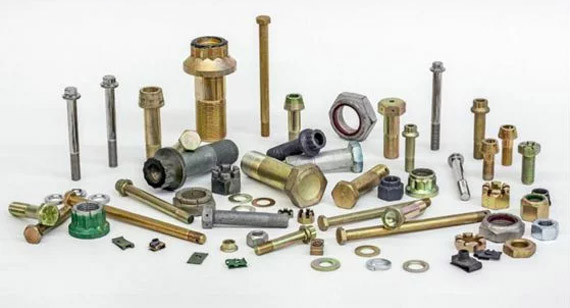
Aerospace fasteners are distinguished by their specific properties, which enable them to operate in the demanding conditions of aircraft systems. These fasteners must meet various criteria for strength, reliability, and environmental resistance, ensuring the safety and functionality of the aircraft.
1. Operation in Harsh Environments
Aerospace fasteners must perform reliably in extreme environments, including high altitudes, where they are exposed to rapid temperature fluctuations, pressure changes, and vibrations. Many fasteners are designed to resist thermal expansion and contraction, preventing loosening or failure.
2. High Shear, Fatigue, and Tensile Strength
Aircraft fasteners must endure high levels of stress and strain without failing. They are engineered for superior shear and tensile strength, enabling them to hold components together under heavy loads, repeated cycles, and fatigue-inducing conditions such as vibrations and aerodynamic forces.
3. Self-Sealing and Self-Locking Features
To prevent fasteners from loosening due to vibrations, many aerospace fasteners include self-locking mechanisms, such as nylon inserts or locking pins. Additionally, some fasteners are self-sealing, which prevents fluid leakage in fuel tanks, hydraulic systems, and other critical components.
4. High Corrosion and Oxidation Resistance
Aerospace fasteners must withstand prolonged exposure to corrosive elements, including moisture, chemicals, and saltwater, particularly in the case of marine or coastal aircraft. Materials such as stainless steel, titanium, and special alloys are often used to ensure corrosion resistance and extend the lifespan of the fasteners.
5. Lightweight Design
Weight is a critical consideration in aerospace design. Aerospace fasteners are typically made from lightweight materials like aluminum or titanium, which offer a balance of strength and low weight. Minimizing weight while maintaining high structural integrity is essential for improving fuel efficiency and aircraft performance.
Aircraft fasteners must meet stringent requirements to ensure safety, reliability, and durability in flight. The performance of these fasteners can mean the difference between structural integrity and failure. Let’s explore the key qualities that make aerospace fasteners suitable for their role.
1. High Strength
Aircraft fasteners must exhibit exceptional tensile and shear strength to withstand the forces they will encounter. These fasteners are often subjected to loads from multiple directions and need to resist deformation or breakage under high stress. This makes materials like titanium and certain steel alloys ideal for aerospace fasteners.
2. Thermal Resistance
Due to the extreme temperatures encountered during flight, especially in components near engines or exhaust systems, aerospace fasteners must be able to withstand high thermal stress. Materials such as stainless steel and superalloys are commonly used for their ability to maintain structural integrity at elevated temperatures.
3. Corrosion Resistance
Corrosion is a significant concern in the aerospace industry, particularly for aircraft that operate in coastal regions or at high altitudes where exposure to moisture and other environmental factors can lead to oxidation and rust. Aerospace fasteners are often coated or made from corrosion-resistant materials to ensure longevity.
4. Lightweight
Every additional pound on an aircraft increases fuel consumption. Aerospace fasteners must be as light as possible without compromising strength. Materials like aluminum and titanium are commonly used because they are both lightweight and strong, helping to reduce the overall weight of the aircraft without sacrificing durability.
Aerospace fasteners must adhere to industry-wide standards to ensure consistency, quality, and safety. These standards are set by international organizations to govern the manufacturing, testing, and use of fasteners in the aerospace sector. Below are the key standards that apply to aerospace fasteners.
Industry Standards:
SAE AS9100
The AS9100 standard, developed by the Society of Automotive Engineers (SAE), specifies quality management requirements for organizations in the aerospace industry, including fastener manufacturers. This standard ensures that aerospace fasteners meet rigorous quality, safety, and performance requirements.
ISO/TC 20/SC 4
The International Organization for Standardization (ISO) provides a range of standards through its Technical Committee 20 (Aircraft and Space Vehicles), Subcommittee 4, which includes standards related to aerospace fasteners. These standards cover design, manufacturing, testing, and quality control processes to ensure fasteners meet international safety and performance criteria.
There are several types of fasteners commonly used in aviation, each serving a different purpose depending on the application. Understanding the different types of general aviation fasteners helps engineers select the right component for each specific part of an aircraft.
1. Aircraft Bolts
Aircraft bolts are used in the assembly of major structural components, such as wings and fuselages. These bolts are made from high-strength materials like steel or titanium and are designed to handle high shear and tensile loads. They often feature a locking mechanism to prevent them from loosening due to vibrations.

2. Aircraft Nuts
Aircraft nuts are paired with bolts and screws to secure components together. Like bolts, these nuts are made from high-strength, corrosion-resistant materials and often feature self-locking mechanisms to prevent loosening under vibrations or thermal expansion.
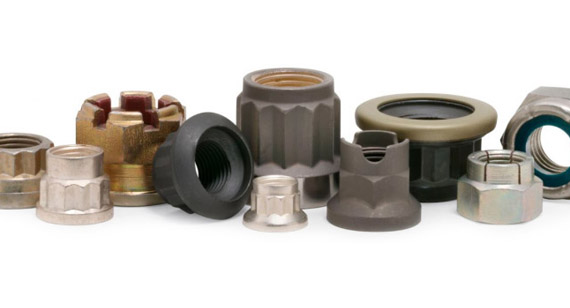
3. Aircraft Screws
Aircraft screws are used to fasten lighter components, such as interior panels or electronic housings. They are typically made from aluminum or stainless steel to ensure lightweight durability. Self-locking aircraft screws are common in applications where vibration resistance is required.
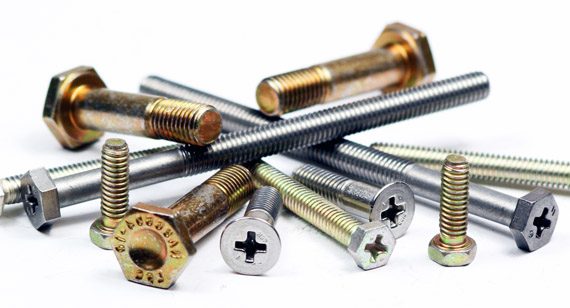
4. Aircraft Rivets
Rivets are used extensively in aircraft manufacturing due to their ability to form a permanent joint between metal sheets. Solid rivets, in particular, are favored for their strength and reliability in high-stress areas of the aircraft, such as the fuselage and wings.
In addition to general aviation fasteners, there are several specialized fasteners designed for specific applications in aerospace manufacturing. These fasteners are engineered to meet unique challenges, such as securing difficult-to-reach areas or withstanding extreme environmental conditions.
1. Blind Bolts/Rivets
Blind bolts and rivets are used in areas of an aircraft that are difficult to access from both sides. These fasteners can be installed from one side only, making them ideal for attaching components in tight spaces or sealed areas of the aircraft.
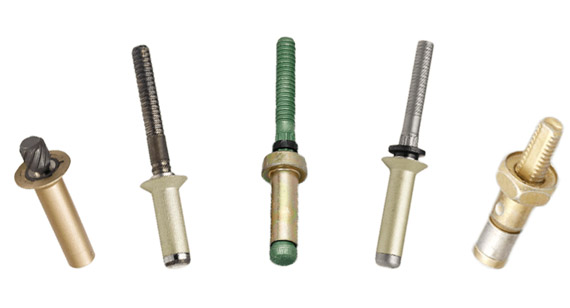
2. Lock Bolts
Lock bolts are designed to create a secure, vibration-resistant joint without the need for additional locking mechanisms like nuts or washers. They are commonly used in the assembly of aircraft fuselages, where they provide a permanent, secure connection.
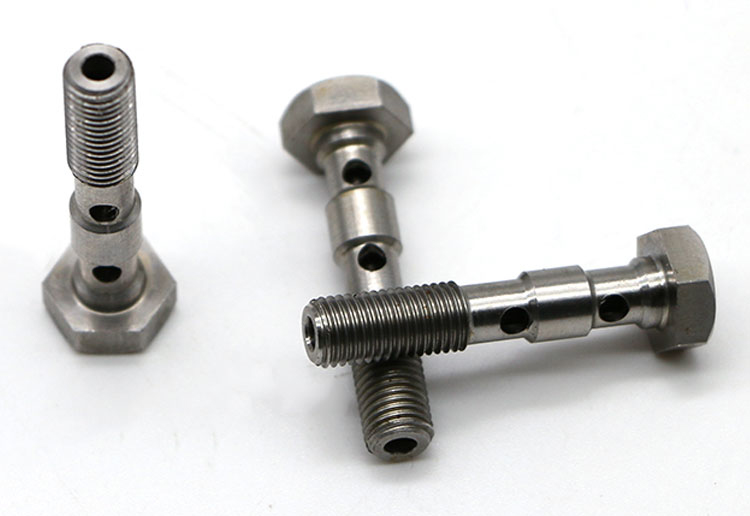
3. Hi-Lok Pins
Hi-Lok pins are fasteners that combine the advantages of bolts and rivets. They are used in areas where precision and strength are critical, such as in wing and fuselage connections. Hi-Lok pins feature a built-in locking collar, which ensures the fastener remains secure during flight.
4. Twistlocks
Twistlocks are specialized fasteners used to quickly secure and release components, such as panels and doors, without the need for tools. These fasteners are common in areas that require frequent access for maintenance or inspection.
5. Bonded Fasteners
Bonded fasteners are used in composite materials or non-metallic surfaces. They are secured using adhesives rather than mechanical force and are commonly used in lightweight, high-strength applications such as satellite structures and unmanned aerial vehicles (UAVs).
The materials used in aerospace fasteners must provide the necessary balance of strength, weight, and corrosion resistance to ensure they perform reliably throughout the life of the aircraft. Below are some of the most common materials used in aerospace fastener manufacturing.
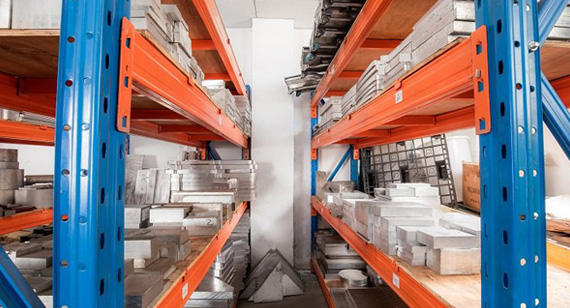
Common Materials:
Aluminum
Aluminum is a lightweight material often used for fasteners in areas of the aircraft that are not subjected to extreme stress. It is corrosion-resistant and cost-effective, making it ideal for non-critical structural components.
Steel
Steel, particularly stainless steel, is used for fasteners requiring high strength and corrosion resistance. It is heavier than aluminum but provides superior mechanical properties, making it ideal for critical structural applications.
Titanium
Titanium is favored for its high strength-to-weight ratio, corrosion resistance, and ability to withstand extreme temperatures. Although more expensive than steel or aluminum, titanium is commonly used in high-stress areas of the aircraft, such as engine components and landing gear.
Special Alloys
Special alloys, such as Inconel or Monel, are used in aerospace fasteners for extreme temperature applications, such as in engines or exhaust systems. These alloys provide exceptional strength and resistance to heat and corrosion.
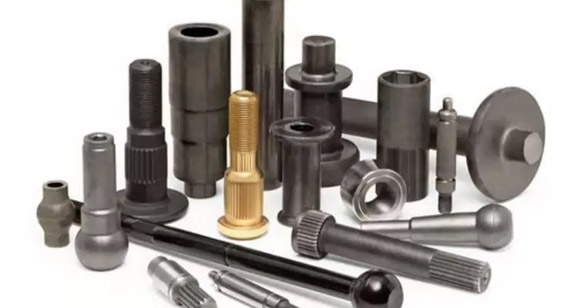
While aerospace fasteners and commercial-grade fasteners may seem similar at first glance, they differ significantly in terms of materials, manufacturing processes, and performance requirements. The following are the main differences between these two types of fasteners.
1. Material
Aerospace fasteners are made from high-performance materials such as titanium, aluminum, and special alloys, while commercial fasteners are typically made from lower-grade materials like carbon steel or zinc-plated steel.
2. Strength
Aerospace fasteners are designed to withstand extreme forces, including high shear and tensile loads, whereas commercial fasteners are often not subjected to the same rigorous standards.
3. Material Properties
Aerospace fasteners offer superior corrosion resistance, thermal resistance, and weight reduction properties. These features ensure the fasteners can withstand the challenging conditions present in aerospace applications, which is not always required for commercial fasteners.
4. Self-Locking
Many aerospace fasteners include self-locking mechanisms to prevent loosening due to vibrations. Commercial fasteners often rely on external locking devices, such as washers or lock nuts.
5. Cost
Due to their specialized materials and precision manufacturing processes, aerospace fasteners tend to be significantly more expensive than commercial-grade fasteners.
At VMT, we offer CNC precision machining services that cater to the exacting standards of the aerospace industry. With extensive experience in CNC machining parts, we provide custom manufacturing solutions for aerospace CNC machined parts, including specialized fasteners. Our CNC machining shop is equipped with the latest technology to ensure that your components are manufactured with the utmost precision and consistency, whether you need prototypes or full-scale production.
We understand the critical role that fasteners play in aerospace applications, which is why we adhere to the strictest quality control measures to ensure that every fastener meets industry standards. From CNC prototype machining to production-scale CNC machining services, VMT is your trusted partner for high-quality aerospace fasteners.

Aerospace fasteners are a crucial component in the construction and maintenance of aircraft, ensuring the structural integrity and safety of these complex machines. The specialized characteristics of aerospace fasteners, from their lightweight design to their high strength and corrosion resistance, make them indispensable in the aviation industry. By understanding the different types of fasteners and their applications, engineers and manufacturers can select the right components to meet the specific needs of each aircraft system.
VMT offers precision machining services for custom CNC machining of fasteners and other aerospace components. Our expertise in CNC machined parts ensures that your fasteners meet the highest standards of quality, durability, and performance.
What materials are fastener caps made of?
Fastener caps in aerospace applications are typically made from materials like aluminum, titanium, or high-strength steel, depending on the specific requirements for weight, strength, and corrosion resistance.
What surface finishes are available for aircraft fasteners?
Common surface finishes for aircraft fasteners include anodizing, passivation, cadmium plating, and nickel plating, all of which provide corrosion resistance and improve the longevity of the fasteners.
What hole fit tolerances are suitable for aerospace fasteners?
Hole fit tolerances for aerospace fasteners are extremely tight, often in the range of ±0.001 inches, to ensure a secure and vibration-resistant fit.
What rivets are used in aerospace?
Solid rivets, blind rivets, and lock rivets are commonly used in aerospace applications to permanently join metal components like the aircraft fuselage and wings.
What fasteners are used in satellites?
Satellites typically use lightweight, corrosion-resistant fasteners made from titanium or special alloys to withstand the harsh conditions of space.
What screws are used on spacecraft?
Spacecraft use screws made from high-strength, corrosion-resistant materials like titanium or stainless steel to ensure durability in extreme environments.
What fasteners are used in space?
Fasteners used in space must resist extreme temperatures, vacuum conditions, and radiation. Titanium and Inconel fasteners are commonly used for their strength and thermal resistance.
What are the 5 types of fasteners?
The five main types of fasteners are bolts, screws, nuts, rivets, and pins. Each has specific applications depending on the requirements for load-bearing, assembly, and accessibility.
